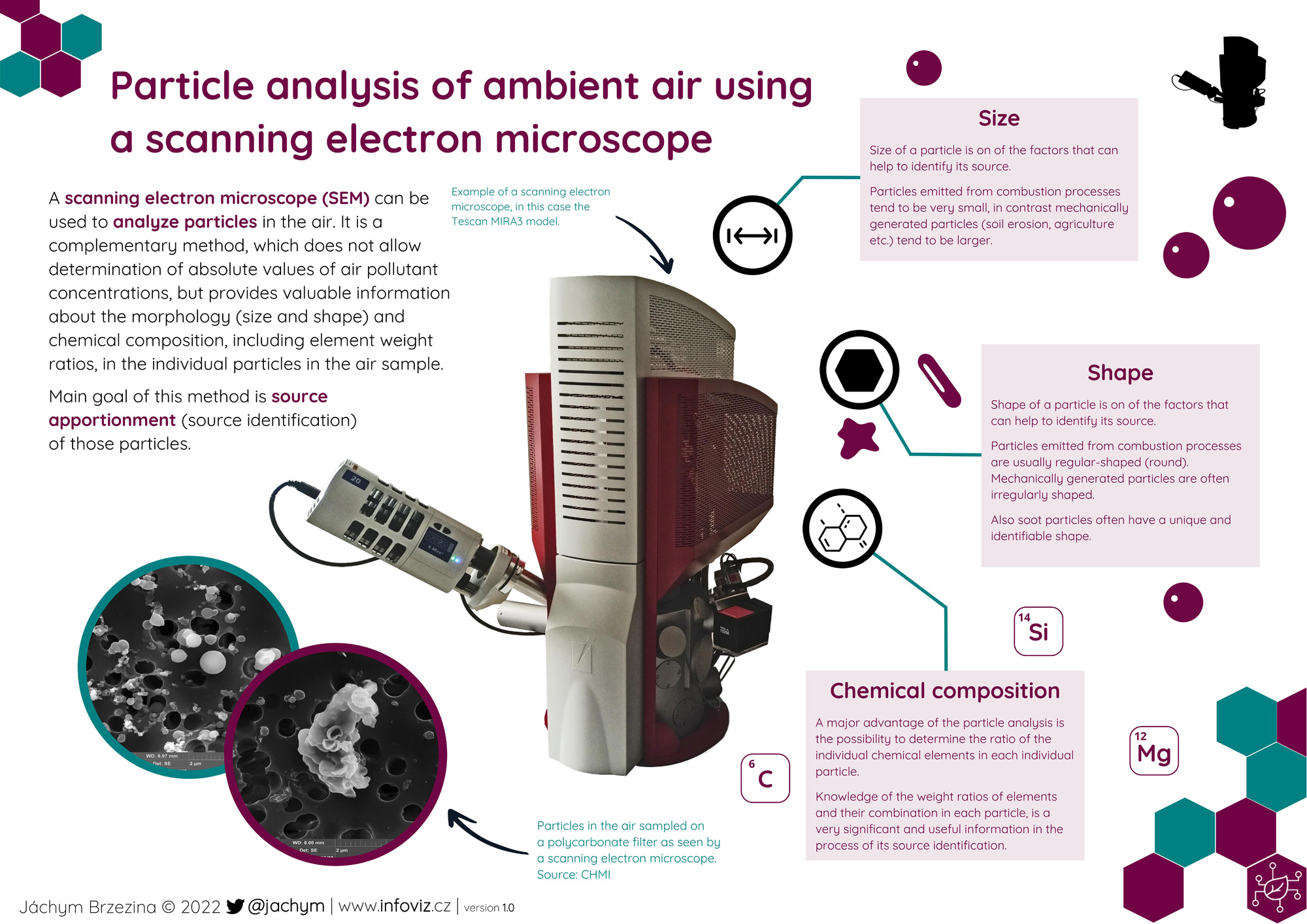
infoviz.cz
A scanning electron microscope (SEM) can be used to analyze particles in the air. It is a complementary method, which does not allow determination of absolute values of air pollutant concentrations, but provides valuable information about the morphology (size and shape) and chemical composition, including element weight ratios, in the individual particles in the air sample.
Main goal of this method is source apportionment (source identification) of those particles.
Size of a particle is on of the factors that can help to identify its source.
Particles emitted from combustion processes tend to be very small, in contrast mechanically generated particles (soil erosion, agriculture etc.) tend to be larger.
Shape of a particle is on of the factors that can help to identify its source.
Particles emitted from combustion processes are usually regular-shaped (round). Mechanically generated particles are often irregularly shaped.
Also soot particles often have a unique and identifiable shape.
A major advantage of the particle analysis is the possibility to determine the ratio of the individual chemical elements in each individual particle.
Knowledge of the weight ratios of elements and their combination in each particle, is a very significant and useful information in the process of its source identification.